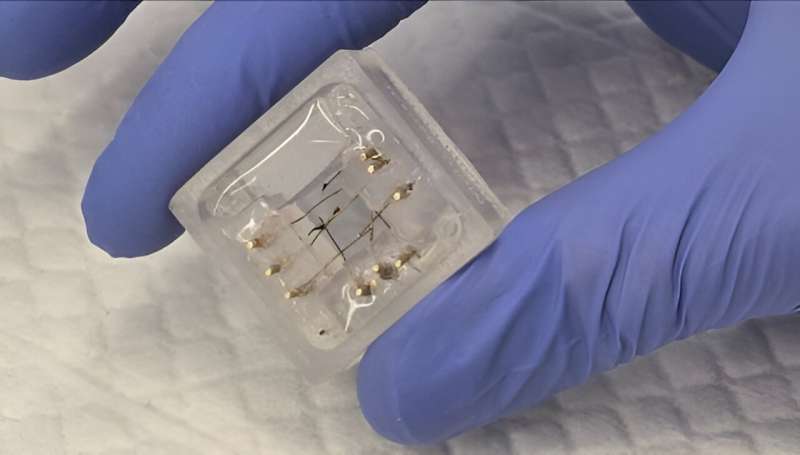Applying the art of origami to advance 3D bioprinting
Originally published by Tel Aviv University, on July 8, 2024
The 3D Origami Platform integrated in a 3D printed structure. Credit: Tel Aviv University
Researchers at Tel Aviv University relied on principles of origami, the Japanese art of paper folding, to develop an original and innovative solution for a problem troubling researchers worldwide: positioning sensors inside 3D-bioprinted tissue models. Instead of bioprinting tissue over the sensors (found to be impracticable), they designed and produced an origami-inspired structure that folds around the fabricated tissue, allowing the insertion of sensors into precisely pre-defined locations.
The study was a joint effort of researchers from several units at TAU: the School of Neurobiology, Biochemistry and Biophysics, the Koum Center for Nanoscience and Nanotechnology, the Department of Biomedical Engineering, the Sagol Center for Regenerative Medicine, the Sagol School of Neuroscience and the Drimmer-Fischler Family Stem Cell Core Laboratory for Regenerative Medicine.
The researchers are Noam Rahav, Adi Soffer, Prof. Ben Maoz, Prof. Uri Ashery, Denise Marrero, Emma Glickman, Megane Beldjilali-Labro, Yakey Yaffe, Keshet Tadmor, and Yael Leichtmann-Bardoogo. The paper is published in the journal Advanced Science.

Comments
Post a Comment